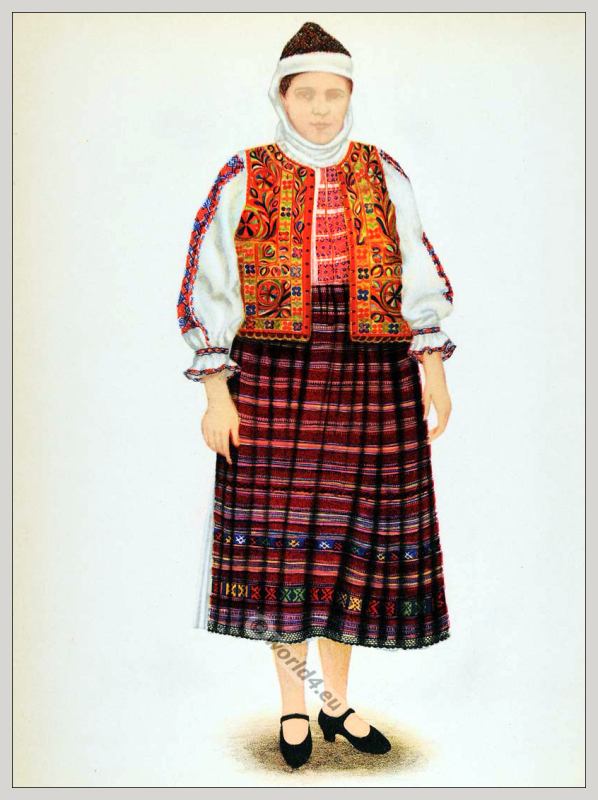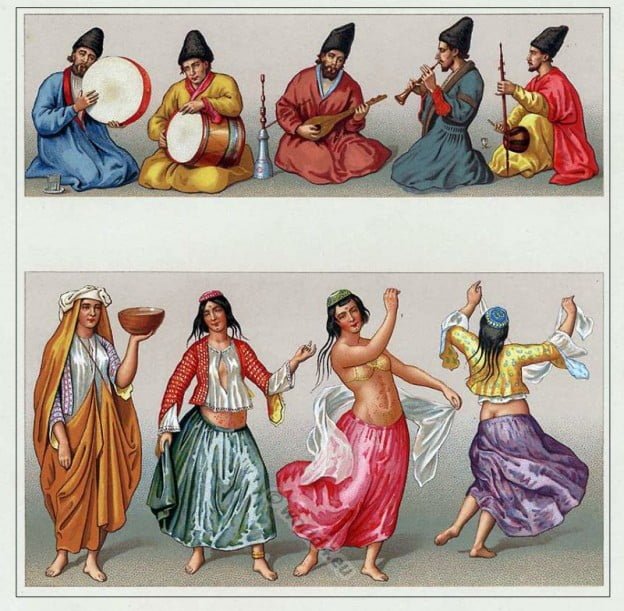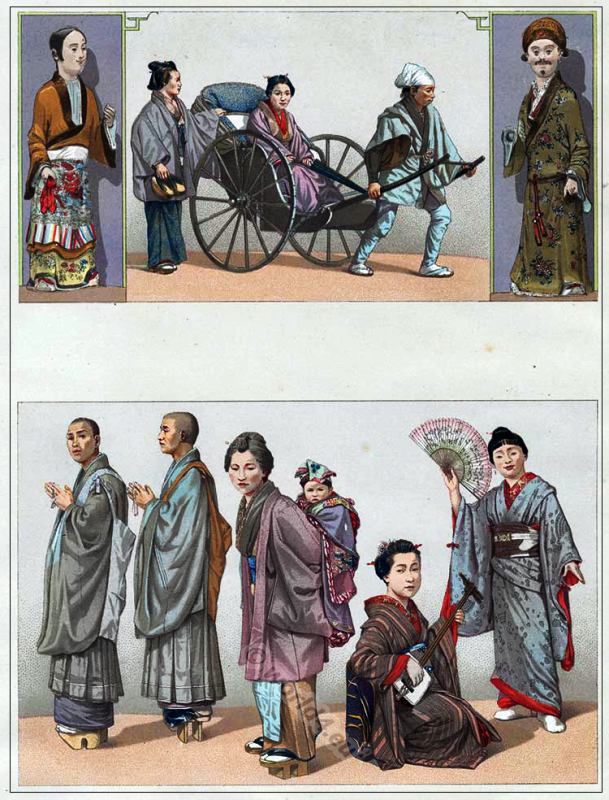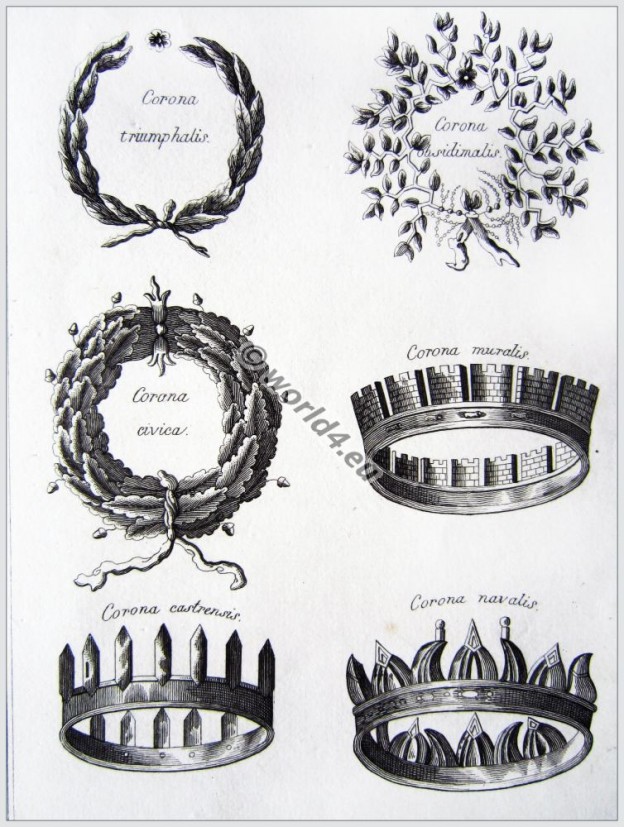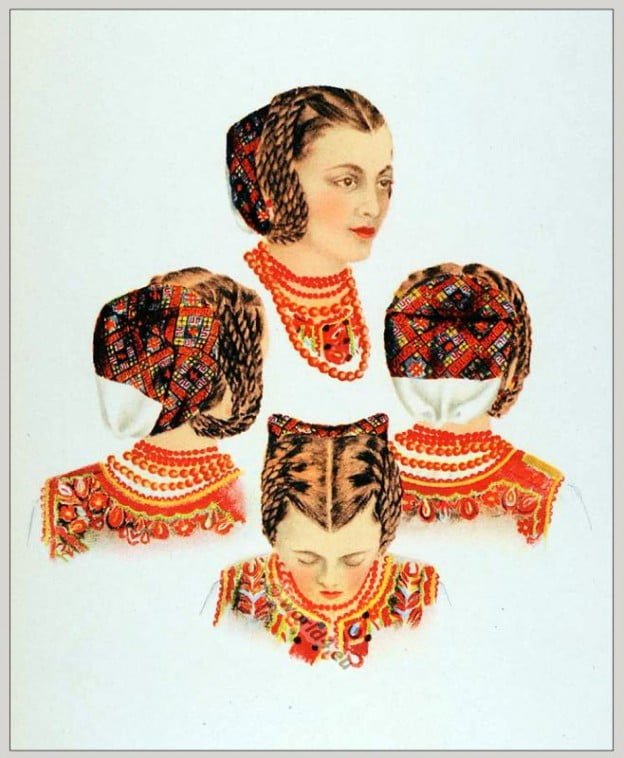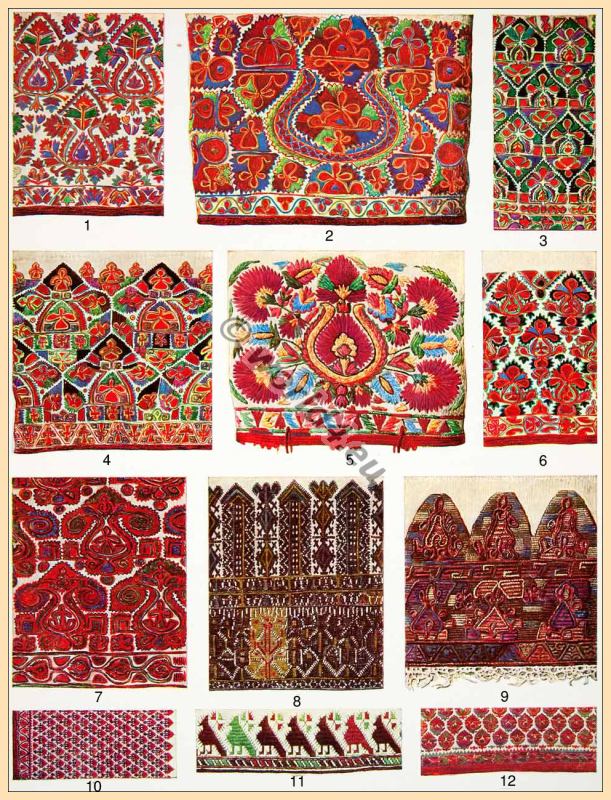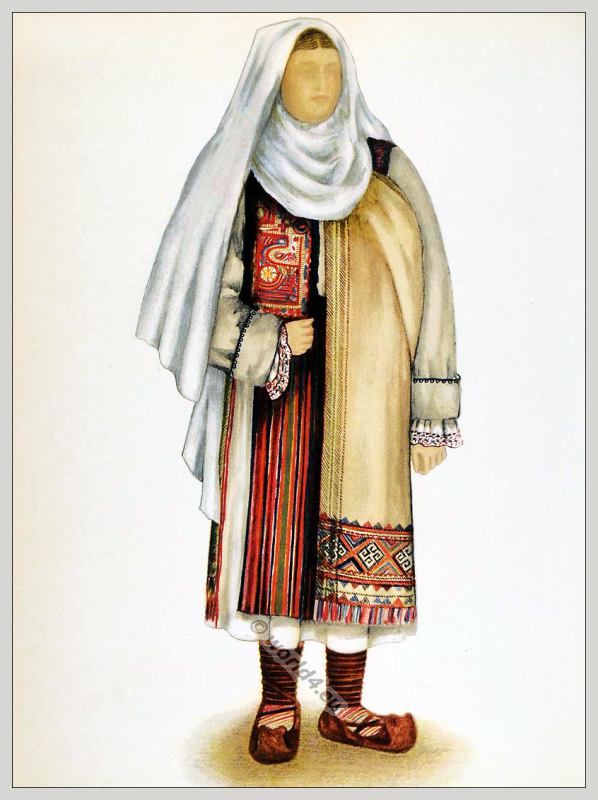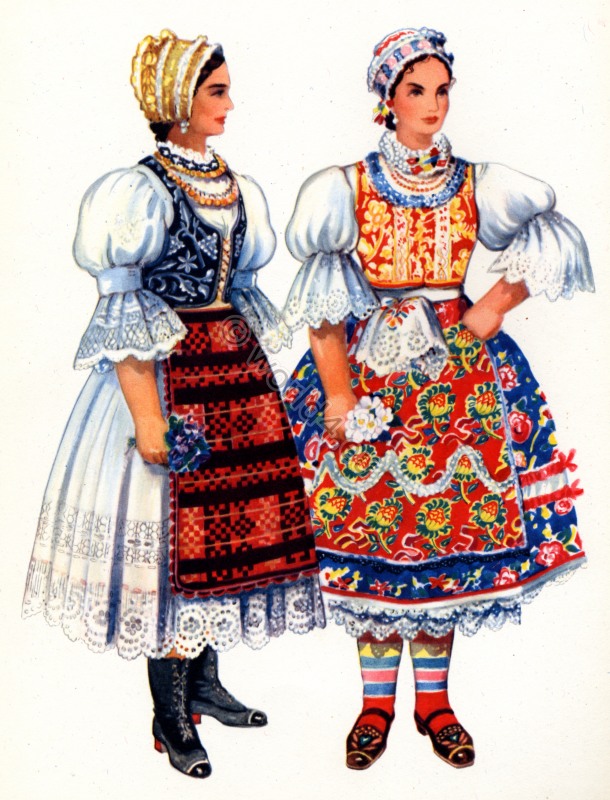Peasant woman costume from Hundiedoara, Transylvania. (Tărancă din Huniedoara. Transilvania.) Gallery: Romanian Folk Costumes. Portul popular romanesc by Alexandrina Enachescu Cantemir. Editeur: Prof. Dimitrie Gusti. Published: Scrisul Romanesc, S.A., Craiova… Read More
The Snake Goddess from Knossos. Priestess in Minoan Crete 2000 B.C.
The Snake Goddess from Knossos, ca. 2000 B.C. Regarded as characteristic of feminine fashion in Minoan Crete.
The Motrebs. Persian dancer and musicians, 16th century.
In the lower part of the image three Persian dancers and a servant in the typical costumes are shown. The average dancer wearing a precursor of Raqs Sharqi belly dance costumes.
Traditional Japan costumes 19th century by Auguste Racinet.
Japan costumes of Riksha or jinrikisha man with a distinguished Japanese woman with servant.
Roman crowns and wreaths. Corona triumphalis, civica, muralis.
Roman Empire. Corona triumphalis, Corona obsidimalis, Corona civica, Corona muralis, Corona castrensis, Corona navalis.
Romania. Female Hairstyles of Hunedoara, Transylvania.
Romania Hairstyles of Hunedoara, Transylvania. (Pieptănătură din Huniedoara. Transilvania.) Source: Romanian Folk Costumes.Portul popular romanesc by Alexandrina Enachescu Cantemir. Editeur: Prof. Dimitrie Gusti. Published: Scrisul Romanesc, S.A., Craiova 1937.
Peasant from the Hateg District. Transylvania.
Peasant from the Hateg District. Transylvania. (Tăran din Hateg. Transilvania.) Gallery: Romanian Folk Costumes. Portul popular romanesc by Alexandrina Enachescu Cantemir. Editeur: Prof. Dimitrie Gusti. Published: Scrisul Romanesc, S.A., Craiova… Read More
Greece. Silk embroidery on cotton chemise.
Traditional silk and cotton embroidery of Greece. 19th century.
Peasant woman from Hateg. Transylvania.
Peasant woman from Hateg. Transylvania. (Tărancă din Hateg. Transilvania.) Gallery: Romanian Folk Costumes. Portul popular romanesc by Alexandrina Enachescu Cantemir. Editeur: Prof. Dimitrie Gusti. Published: Scrisul Romanesc, S.A., Craiova 1937.
Women from Vojvodina, Bačka Hungaria.
Serbian Woman from Vojvodina, Bačka, Pannonia

